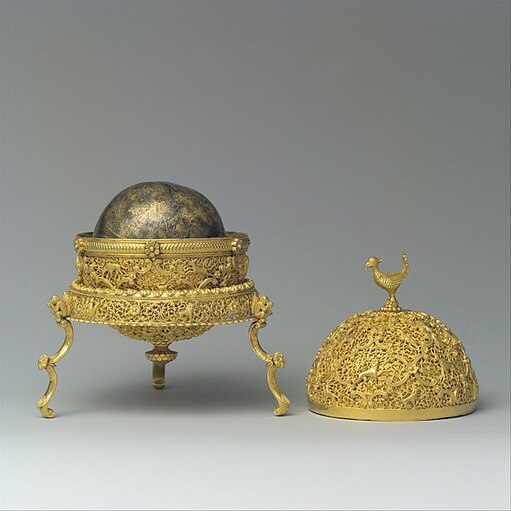Sentry Page Protection
Lapis de Goa
The Goa Stone
The Goa Stone
Tradition:
Western
Source / Author:
Gasper Antonio (Florentine Jesuit missionary in Goa)
Preparation:
The stones must all be levigated very well with Rose water until impalpably fine; they are then combined with the Musk and Ambergris. Next, a mucilage of Tragacanth or Deer horn is used to form a pill mass from which pills of 1⁄2– 1 scruple each, and dry in the shade. They were traditionally polished with a limpet shell until glossy.
According to some sources the mixture was left to ferement for 6–12 months before being formed into pills.
Function:
Clears Heat, protects against Poison, calms the Mind and Spirit, benefits the Heart
Use:
1. Antidote against Epidemic and Infectious diseases including Plague
2. Malarial Fevers
3. Venomous Bites, including Rabid Dogs and Cobra bites
4. Melancholy
5. Consumption
6. Internal Abscesses
7. Leprosy
8. Morphew and Psoriasis-like skin diseases
9. Diseases of the Brain caused by Cold and Damp
10. Apoplexy
11. Increases Wit and Memory, benefits Brain function and Improves Eyesight
Dose:
1 scruple
Cautions:
1. Dangerous if the stones are not prepared properly.
2. Not suitable in weak digestion
Modifications:
1. The original was said to contain Fossil shark teeth and Deer horn.
2. A reformed version was said to replace Ambergris with Amber.
3. Some versions listed a type of White Earth, which later versions replaced with Armenian Earth.
4. Some versions added Tabasheer, Garnet, Armenian Earth, Ivory, Unicorn (Narwhal) horn, and Crabs Eyes.
5. Later versions added herbs including Angelica, Contrayerva, and Virginian Snakeroot
These were originally manufactured by a Jesuit missionary in Goa on the West coast of India in the 17th century. They became an extremely profitable trade which helped to fund the mission, a hospital and a library. They were almost certainly inspired by local gem formulas which were likewise held in high repute.
The finished "stones" were polished to make them shiny and were often housed in elaborate silver or gold cases, as shown in the photo above.
Rumphius (1655) gave the earliest accounted of The Goa Stone in the West:
"This is the stone made by the Portuguese in Goa, but that is now transported throughout the Indies because of its beneficial powers; I do not know of what it is made, except that from its appearance and taste, I would say its most important ingredients are ground salt, Bezoar, Ambra and Musk. It has the size and shape of a pigeon egg or small chicken egg, seems guilded on the outside, while inside it is dark grey, glistening with small gold dots, soft to rub, and clearly smelling like Muscus and Ambra ... This Stone is the best and most effective Cordial that has been discovered up till now, and there is no other like it: a Bezoar or other Cordial cannot compare to this, and he who examines it, will acknowledge this himself, nay, will experience this even more than what I say or indicate here".
Dr. Christopher J. Duffin wrote 2 very good articles on The Goa Stone in The Pharmaceutical Historian, 2010, issues June and September. In it he gives a brief history and lists 10 different variations in the formula, including the original.
The finished "stones" were polished to make them shiny and were often housed in elaborate silver or gold cases, as shown in the photo above.
Rumphius (1655) gave the earliest accounted of The Goa Stone in the West:
"This is the stone made by the Portuguese in Goa, but that is now transported throughout the Indies because of its beneficial powers; I do not know of what it is made, except that from its appearance and taste, I would say its most important ingredients are ground salt, Bezoar, Ambra and Musk. It has the size and shape of a pigeon egg or small chicken egg, seems guilded on the outside, while inside it is dark grey, glistening with small gold dots, soft to rub, and clearly smelling like Muscus and Ambra ... This Stone is the best and most effective Cordial that has been discovered up till now, and there is no other like it: a Bezoar or other Cordial cannot compare to this, and he who examines it, will acknowledge this himself, nay, will experience this even more than what I say or indicate here".
Dr. Christopher J. Duffin wrote 2 very good articles on The Goa Stone in The Pharmaceutical Historian, 2010, issues June and September. In it he gives a brief history and lists 10 different variations in the formula, including the original.
Nothing at the moment
Nothing at the moment


